Academia Neoconfuciana Dodong Seowon (도동서원) [Patrimonio Cultural de la Humanidad de la Unesco]
.0M 2023-01-05
Gujiseo-ro 726, Guji-myeon, Dalseong-gun, Daegu
+82-53-688-3162
La Academia Neoconfuciana Dodong Seowon está situada en Daegu y es una de las cinco escuelas confucianas más grandes de Corea, junto con Byeongsan Seowon, Oksan Seowon, Sosu Seowon y Dosan Seowon. El instituto fue creado por estudiosos confucianos en 1568, al este del monte Biseulsan, fue destruido durante la invasión japonesa en 1592, y reconstruido en 1605, bajo el nombre de Borodong. Años después se le llamaría Dodong, que significa las enseñanzas (do) del confucianismo que viene del este (dong). Algunas partes que merece la pena visitar del instituto son la puerta de la tierra, una sala llamada Jungjeongdang, el pabellón Suwollu, y los árboles ginkgo de más de 400 años. Dentro de la sala Jungjeongdang hay una escultura con 4 cabezas de dragón, llamada Samuljan, que simboliza las enseñanzas de Confucio.
Complejo Temático de la Historia de Daegaya (대가야 역사테마관광지)
10.2Km 2021-12-10
Daegaya-ro 1216, Daegaya-eup, Goryeong-gun, Gyeongsangbuk-do
+82-54-950-7005
Este es un parque temático que enseña sobre la cultura y la historia de la cultura del antiguo reino de Daegaya, utilizando tecnología de punta. Además, hay espacios verdes que ofrecen un rico descanso a los visitantes.
Festival de Daegaya en Goryeong (고령대가야축제)
10.2Km 2025-03-27
Daegaya-ro 1216, Goryeong-gun, Gyeongsangbuk-do
054-950-6427
* La edición 2025 del festival se ha cancelado debido a incendios forestales en la región.
Museo de Daegaya (대가야 박물관)
10.5Km 2022-09-13
Daegaya-ro 1203, Daegaya-eup, Goryeong-gun, Gyeongsangbuk-do.
Es un centro de exposición integral, en donde los visitantes podrán conocer la historia y la cultura completa de la época de Daegaya, participando en los diferentes tipos de programas. También podrán experimentar sus costumbres y tradiciones folclóricas. Exhibe y conserva aproximadamente 300 reliquias excavadas en el área histórica de Jisan-dong, del distrito de Gobun-gun, declarado Sitio Histórico, y los encontrados en la zona de Goryeong.
Los patrimonios descubiertos se representan con los mismos formatos que en la antigüedad, y en particular el pabellón con el techo con forma de bóveda, en dimensión y estructura, es el mejor del país. El museo también cuenta con instalaciones anexas de última tecnología, materiales audiovisuales, sector de búsqueda de información, túnel de imágenes, etc. Recorriendo el museo, podrá apreciar la espléndida cultura del hierro y el barro correspondiente a aquella época y descubrirá que esto ha influenciado a algunas épocas antiguas de Japón.
Túmulos de Jisan-dong en Goryeong (고령 지산동 고분군)
10.8Km 2022-09-19
Daegaya-eup, Goryeong-gun, Gyeongsangbuk-do.
Goryeong, capital del reino de Daegaya que tomó el poder tras la caída de Geumgwangaya, entre los 6 reinos de Gaya, prácticamente es un museo al aire libre. Sobre la cresta del sudeste del monte Jusan se hallan 200 túmulos de Daegaya. Sobre esta cresta se encuentra el túmulo que mide 20 m de diámetro, otros medianos están en el centro de Daegaya-eup y los pequeños al pie de la montaña. El túmulo más grande del sur se llama Geumnimwangneung.
Desde 1977, se realizó activamente la excavación tras el descubrimiento de los túmulos por la Universidad Gyeongbuk y Universidad Gyemyeong, lo cual ayudó en gran medida las investigaciones sobre Daegaya. Encontraron grandes cantidades de coronas de oro, accesorios de oro, plata y jade, armaduras, etc. Sobre todo, en el túmulo nº 42 se hallaron 32 salas secundarias alrededor de la sala principal para el entierro de vivos con el muerto, lo cual hizo comprobar el sistema de este tipo de entierro. Hay un museo que se llama el Museo de Túmulos Reales de Daegaya, construido para dar a conocer características de tumbas con el entierro de vivos con el muerto y la estructura social de ese período.
Bosque Recreativo del Monte Biseulsan (비슬산자연휴양림)
12.8Km 2023-01-05
Iryeonseonsa-gil 61, Yuga-myeon, Dalseong-gun, Daegu.
El Bosque Recreativo del Monte Biseulsan de Dalseong-gun de Daegu está situado debajo de los picos Johwabong y Daegyeonbong. Se ven formaciones rocosas de la ladera de la montaña, valles con aguas limpias y en primavera se notan las azaleas rosas en los senderos. En invierno, se puede disfrutar de actividades en cuevas y torres de hielo, pistas de trineo, etc. Dentro del Bosque Recreativo se encuentran instalaciones de parque acuático, sendas de paseo, y aparatos deportivos, así ocmo alojamientos incluyendo zonas de campamento. La reserva se realiza por internet.
Yeonpung Gotaek (the Old House of Munchung) / 연풍고택/문충고가
13.2Km 2025-08-12
44, Gaesil 1-gil, Ssangnim-myeon, Goryeong-gun, Gyeongsangbuk-do
+82-54-956-4022 / +82-10-3207-4022
Located in the village of Gaesil in Hapga-ri, Ssangnim-myeon, Goryeong-gun, Gyeongsangbuk-do, the Old House of Yeonpung is an historic 150-year-old house, and was formerly the anchae (the inner house) among the four structures built by the current owners’ ancestor, who served as the governor of Yeonpung-hyeon, Goesan-gun, Chungcheongbuk-do. The house was restored after being bombed during the Korean War, and is currently is used to accommodate visitors or for village events.
The Old House of Yeonpung is situated behind Hwasanjae Pass, which is the traditional wedding experience site of Gaesil village. It is considered a propitious site according to geomantic theory as there is a bamboo forest to its rear. During restoration work in 2010, the large anchae, which covered about 2,644m2, was renovated into a modern structure with four rooms.
In particular, the Juksil and Maesil rooms are very large, making them ideal for families and groups. A separate building with a large courtyard and a BBQ facility is available for guests who want to cook or have a barbecue. The charming courtyard comprises a well, a bench, and various flower trees.
Known as the village of the Seonsan Kim clan, Gaesil Village was founded by the descendants of Kim Jong-jik (pen-name: Jeompiljae, 1431-1492), a leading Korean Neo-Confucian scholar of the early Joseon period who died during the Literati Purge of 1498. The head house of Kim Jong-jik (Provincial Folk Material No. 62) and Doyeonjae (Provincial Cultural Heritage Material No. 111), the old village school, are also situated in the village. In addition, the nearby Daegaya Museum displays the writing accessories of Kim Jong-jik (Provincial Tangible Cultural Heritage No. 209).
The village is also known as Gaehwasil, meaning “a beautiful valley with blooming flowers” as it is surrounded by a flower-covered mountain called Mt. Hwagaesan, a 350-year-old bamboo forest, and Jeopmubong Peak, which is said to resemble a fluttering butterfly. Over 80% of the village houses are traditional hanok buildings nestled amid a cozy environment.
During the Campaign to Create Beautiful Communities conducted in 2001 and the Farm Experience Village Development Project in 2005, the village’s hanok were renovated or entirely rebuilt, earthen-stone walls were built, walking paths created, and refined landscaping works carried out, establishing the village in its current form. Furthermore, a village shelter, experience center, Internet café, and other facilities were built for the convenience of residents and visitors alike. In recognition of the villager’ efforts to revitalize their community, Gaesil was awarded the presidential citation at the Korea Rural Village Awards in 2011.
Designated as a NongHyup’s Farm Stay Village in 2003, Gaesil operates a wide variety of hands-on experience programs relating to nature, agriculture, and local traditions, such as collecting sweet potatoes and rice planting; Korean traditional etiquette and tea ceremony; kite making and straw handicrafts; traditional food experiences such as yeot (Korean hard taffy) and yugwa (deep-fried sweet rice cakes); traditional games such as riding on a swing and neolttwigi (Korean see-saw); as well as loach fishing, ice sledding and so on. Gaesil Village, a representative farm stay village that “blooms” in every season, attracts around 50-60,000 visitors every year.
Ungidaek House / 개실마을영농조합법인(웅기댁)
13.2Km 2025-08-13
32, Gaesil 1-gil, Ssangnim-myeon, Goryeong-gun, Gyeongsangbuk-do
+82-54-956-4022 / +82-10-3207-4022
Ungidaek House of the Gaesil Village Farming Association Corporation is distinctive for its red clay exterior. This cozy hanok comprises two rooms: Juksil, which accommodates 6 people, and Maesil, which is suitable for 4 people. Each room is decorated with white wallpaper and a red clay floor sheet, and is equipped with TV, air-conditioner, toiletries, hairdryer, table, and other amenities. Each room has an ensuite bathroom and cooking equipment.
Known as the village of the Seonsan Kim clan, Gaesil Village was founded by the descendants of Kim Jong-jik (pen-name: Jeompiljae, 1431-1492), a leading Korean Neo-Confucian scholar of the early Joseon period who died during the Literati Purge of 1498. The head house of Kim Jong-jik (Provincial Folk Material No. 62) and Doyeonjae (Provincial Cultural Heritage Material No. 111), the old village school, are also situated in the village. In addition, the nearby Daegaya Museum displays the writing accessories of Kim Jong-jik (Provincial Tangible Cultural Heritage No. 209).
The village is also known as Gaehwasil, meaning “a beautiful valley with blooming flowers” as it is surrounded by a flower-covered mountain called Mt. Hwagaesan, a 350-year-old bamboo forest, and Jeopmubong Peak, which is said to resemble a fluttering butterfly. Over 80% of the village houses are traditional hanok buildings nestled amid a cozy environment.
During the Campaign to Create Beautiful Communities conducted in 2001 and the Farm Experience Village Development Project in 2005, the village’s hanok were renovated or entirely rebuilt, earthen-stone walls were built, walking paths created, and refined landscaping works carried out, establishing the village in its current form. Furthermore, a village shelter, experience center, Internet café, and other facilities were built for the convenience of residents and visitors alike. In recognition of the villager’ efforts to revitalize their community, Gaesil was awarded the presidential citation at the Korea Rural Village Awards in 2011.
Designated as a NongHyup’s Farm Stay Village in 2003, Gaesil operates a wide variety of hands-on experience programs relating to nature, agriculture, and local traditions, such as collecting sweet potatoes and rice planting; Korean traditional etiquette and tea ceremony; kite making and straw handicrafts; traditional food experiences such as yeot (Korean hard taffy) and yugwa (deep-fried sweet rice cakes); traditional games such as riding on a swing and neolttwigi (Korean see-saw); as well as loach fishing, ice sledding and so on. Gaesil Village, a representative farm stay village that “blooms” in every season, attracts around 50-60,000 visitors every year.
The House of Soccer kkumnamu (Future Soccer Player) / 축구꿈나무집
13.3Km 2025-08-13
32, Gaesil 1-gil, Ssangnim-myeon, Goryeong-gun, Gyeongsangbuk-do
+82-54-956-4022 / +82-10-3207-4022
The House of Soccer kkumnamu (The House of Future Soccer Player) of the Gaesil Village Farming Association Corporation is a hanok-style accommodation complete with a grassy field and a courtyard filled with well-kept flowerpots, creating a serene atmosphere around the hanok. The house has two Korean-style rooms with a capacity of two to four people. The Nansil room also has a kitchen. This cozy hanok is equipped with modern facilities for guests’ comfort and convenience, as well as the full range of amenities including TV, fridge, air-conditioner, toiletries, and table. Guests are permitted to hold a BBQ outside provided that they supply the charcoal themselves.
Known as the village of the Seonsan Kim clan, Gaesil Village was founded by the descendants of Kim Jong-jik (pen-name: Jeompiljae, 1431-1492), a leading Korean Neo-Confucian scholar of the early Joseon period who died during the Literati Purge of 1498. The head house of Kim Jong-jik (Provincial Folk Material No. 62) and Doyeonjae (Provincial Cultural Heritage Material No. 111), the old village school, are also situated in the village. In addition, the nearby Daegaya Museum displays the writing accessories of Kim Jong-jik (Provincial Tangible Cultural Heritage No. 209).
The village is also known as Gaehwasil, meaning “a beautiful valley with blooming flowers” as it is surrounded by a flower-covered mountain called Mt. Hwagaesan, a 350-year-old bamboo forest, and Jeopmubong Peak, which is said to resemble a fluttering butterfly. Over 80% of the village houses are traditional hanok buildings nestled amid a cozy environment.
During the Campaign to Create Beautiful Communities conducted in 2001 and the Farm Experience Village Development Project in 2005, the village’s hanok were renovated or entirely rebuilt, earthen-stone walls were built, walking paths created, and refined landscaping works carried out, establishing the village in its current form. Furthermore, a village shelter, experience center, Internet café, and other facilities were built for the convenience of residents and visitors alike. In recognition of the villager’ efforts to revitalize their community, Gaesil was awarded the presidential citation at the Korea Rural Village Awards in 2011.
Designated as a NongHyup’s Farm Stay Village in 2003, Gaesil operates a wide variety of hands-on experience programs relating to nature, agriculture, and local traditions, such as collecting sweet potatoes and rice planting; Korean traditional etiquette and tea ceremony; kite making and straw handicrafts; traditional food experiences such as yeot (Korean hard taffy) and yugwa (deep-fried sweet rice cakes); traditional games such as riding on a swing and neolttwigi (Korean see-saw); as well as loach fishing, ice sledding and so on. Gaesil Village, a representative farm stay village that “blooms” in every season, attracts around 50-60,000 visitors every year.
Lang Studio (랑 스튜디오)
13.3Km 2025-06-04
37, Gaesil 1-gil, Goryeong-gun, Gyeongsangbuk-do
Rang Studio is a white-painted hanok guesthouse in Gaesil Village, Goryeong, Gyeongsangbuk-do - hometown of the descendants of Joseon scholar Kim Jong-jik. The guestroom is equipped with a bathroom plus a kitchen with cooking utensils provided. Therfe is an outdoor barbecue, but visitors should bring their own charcoal. In the village, visitors can experience the atmosphere of the old countryside, sampling traditional farming and craft skills plus traditional pastimes and food.

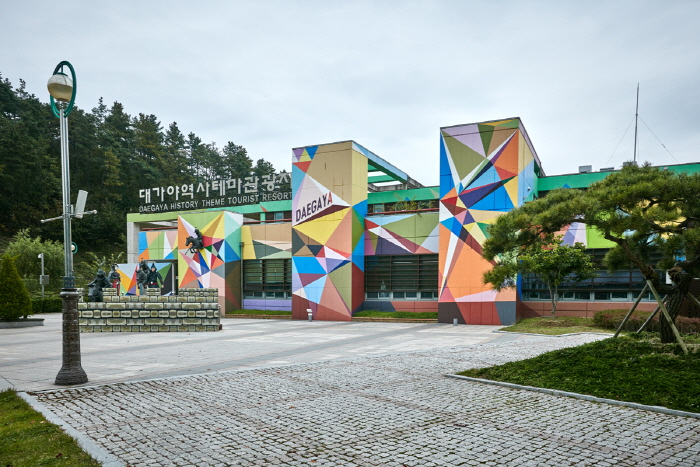

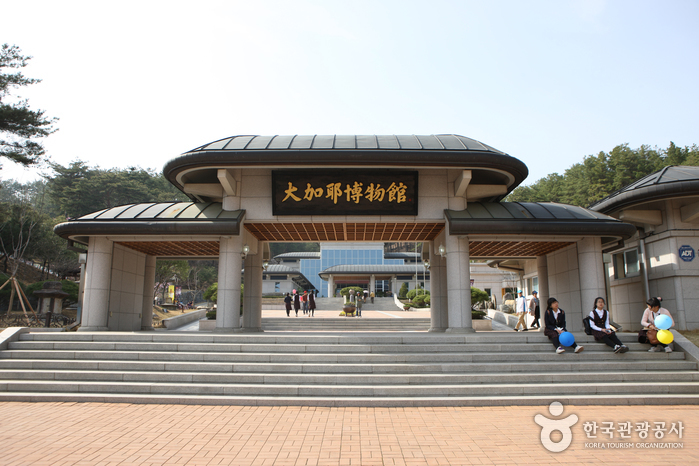
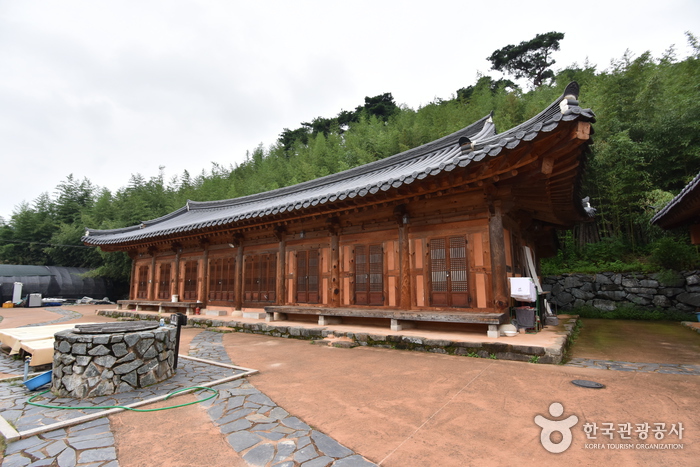
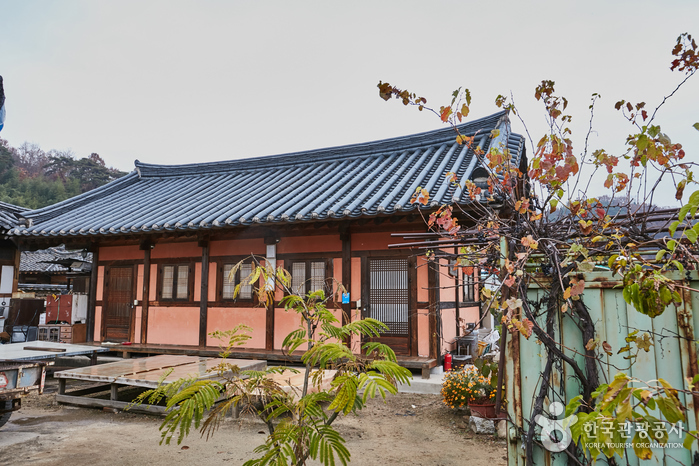
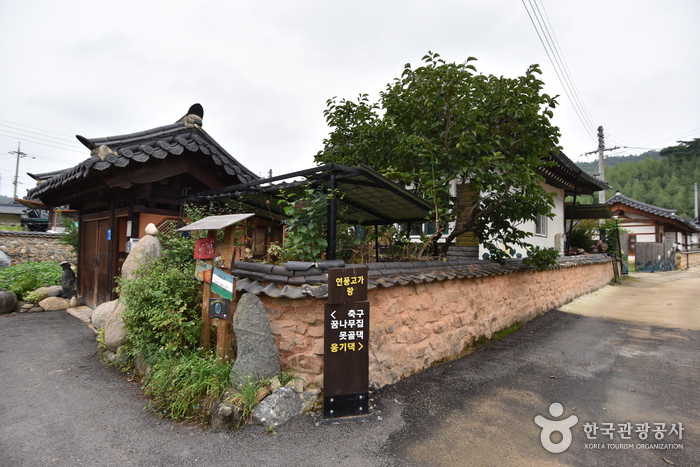
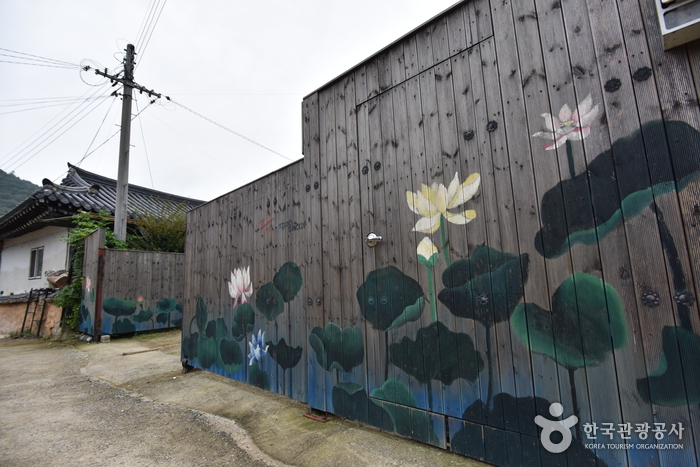
 Español
Español
 한국어
한국어 English
English 日本語
日本語 中文(简体)
中文(简体) Deutsch
Deutsch Français
Français Русский
Русский